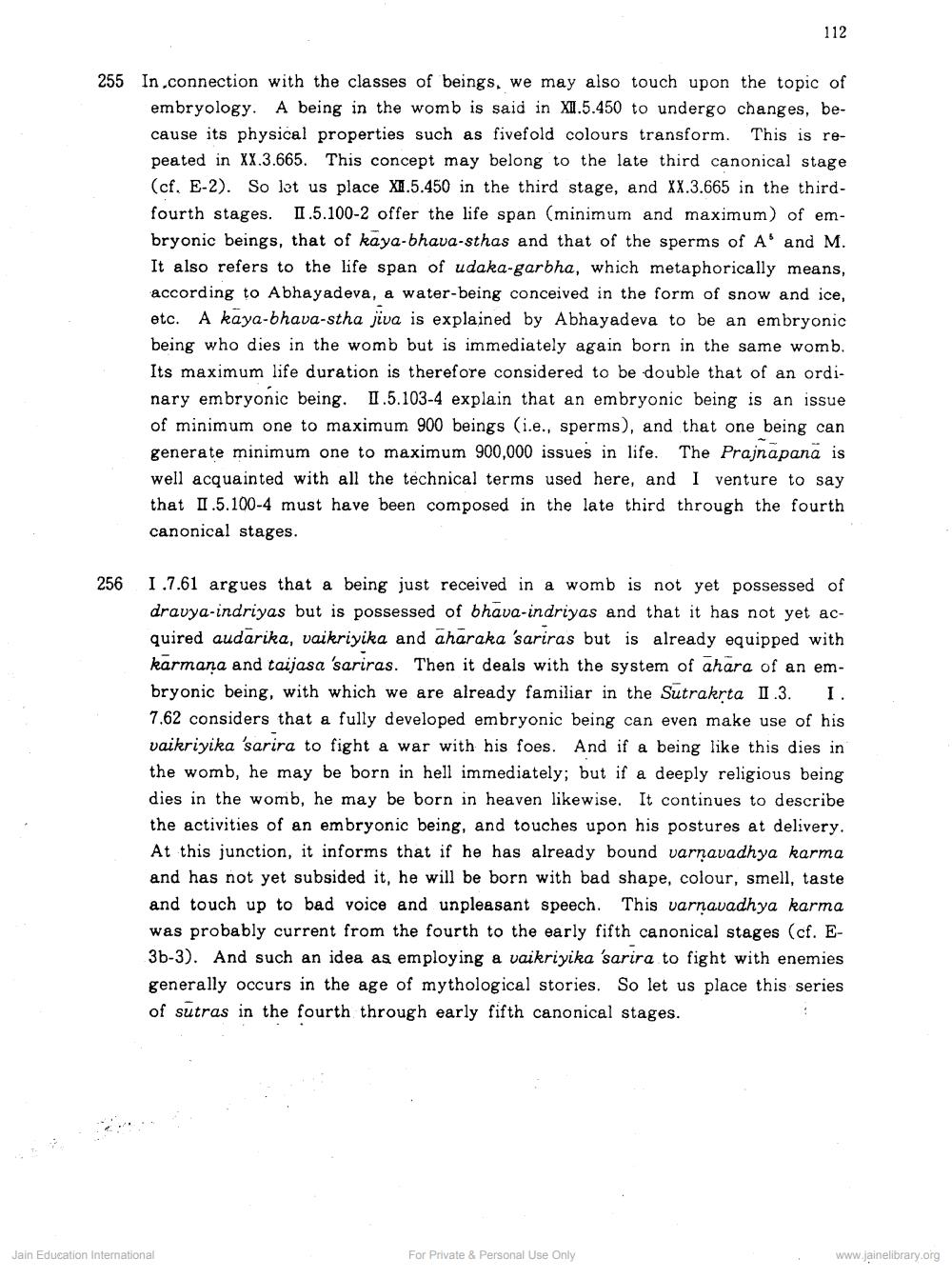________________
112
255 In.connection with the classes of beings, we may also touch upon the topic of
embryology. A being in the womb is said in XI.5.450 to undergo changes, because its physical properties such as fivefold colours transform. This is repeated in XX.3.665. This concept may belong to the late third canonical stage (cf. E-2). So let us place XI.5.450 in the third stage, and XX.3.665 in the thirdfourth stages. II.5.100-2 offer the life span (minimum and maximum) of embryonic beings, that of kaya-bhava-sthas and that of the sperms of A and M. It also refers to the life span of udaka-garbha, which metaphorically means, according to Abhayadeva, a water-being conceived in the form of snow and ice, etc. A kaya-bhava-stha jiva is explained by Abhayadeva to be an embryonic being who dies in the womb but is immediately again born in the same womb. Its maximum life duration is therefore considered to be double that of an ordinary embryonic being. 1.5.103-4 explain that an embryonic being is an issue of minimum one to maximum 900 beings (i.e., sperms), and that one being can generate minimum one to maximum 900,000 issues in life. The Prajnapana is well acquainted with all the technical terms used here, and I venture to say that 1.5.100-4 must have been composed in the late third through the fourth canonical stages.
256
1.7.61 argues that a being just received in a womb is not yet possessed of dravya-indriyas but is possessed of bhava-indriyas and that it has not yet acquired audarika, vaikriyika and aharaka 'sariras but is already equipped with karmana and taijasa 'sariras. Then it deals with the system of ahara of an embryonic being, with which we are already familiar in the Sutrakrta 11.3. I. 7.62 considers that a fully developed embryonic being can even make use of his vaikriyika 'sarira to fight a war with his foes. And if a being like this dies in the womb, he may be born in hell immediately; but if a deeply religious being dies in the womb, he may be born in heaven likewise. It continues to describe the activities of an embryonic being, and touches upon his postures at delivery, At this junction, it informs that if he has already bound varṇavadhya karma and has not yet subsided it, he will be born with bad shape, colour, smell, taste and touch up to bad voice and unpleasant speech. This warnavadhya karma was probably current from the fourth to the early fifth canonical stages (cf. E36-3). And such an idea as employing a vaikriyika 'sarira to fight with enemies generally occurs in the age of mythological stories. So let us place this series of sutras in the fourth through early fifth canonical stages.
Jain Education International
For Private & Personal Use Only
www.jainelibrary.org




